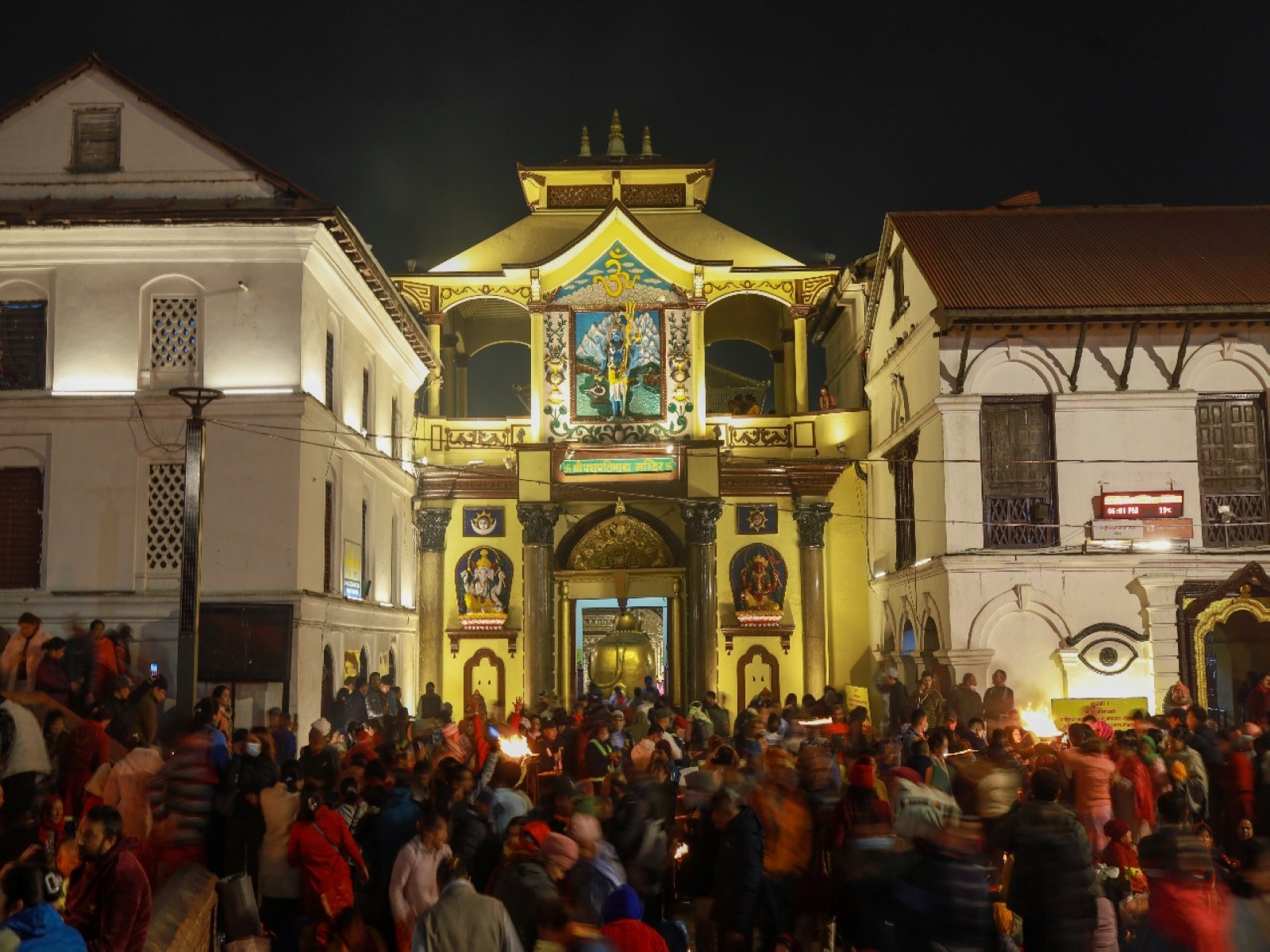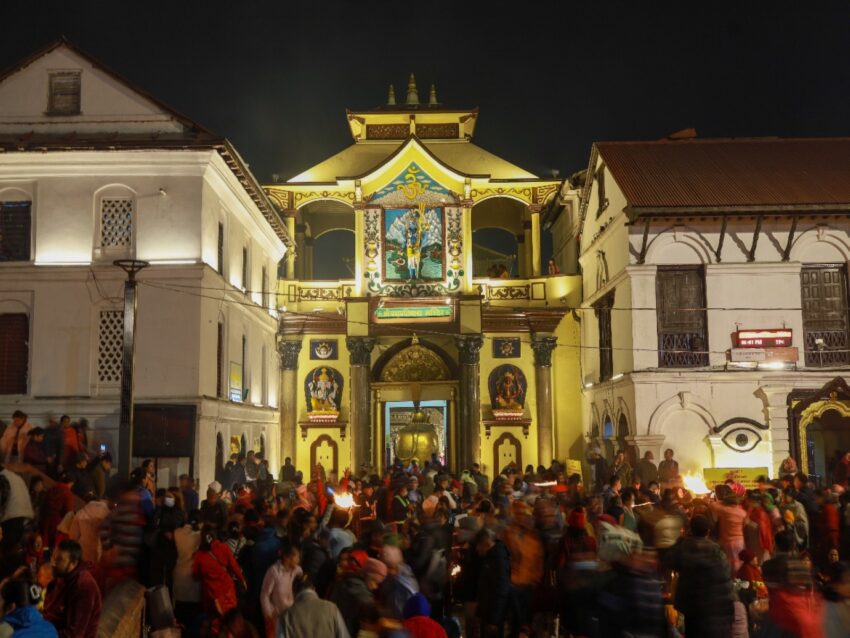
Kathmandu [Nepal], November 18 (ANI): Sitting under tarpaulin shelters and tending to oil lamps through the night in the premises of the Pashupatinath Temple, thousands of Hindu devotees gathered on the eve of Bala Chaturdashi, praying for the salvation of departed souls.
Devotees camp overnight, remaining awake to care for the lamps as part of the ritual dedicated to the peace of deceased family members. Bala Chaturdashi begins on Marga Krishna Trayodashi–the 13th day of the waning moon in the Nepali month of Mangsir.
Observing strict fasting, devotees eat only one meal that day and abstain from garlic, onions, fish, eggs and other items considered impure. In the evening, they visit the Pashupatinath Temple or other shrines dedicated to Lord Shiva, chanting hymns and lighting the “Akhanda Jyoti” in memory of departed relatives.
On Marga Krishna Chaturdashi, the next morning, devotees take a holy bath and begin their ritual walk around the temple complex, scattering seven kinds of grains–Satbeej–along the path.
“On Bala Chaturdashi Satbeej will be spread; today the lamps have been lit. I came here alone–I have been lighting lamps inside the main temple complex for several years. This year, special arrangements were made for the lighting. I lit the lamp near the Krishna Temple. We usually light lamps in the name of loved ones who have passed away; I lit the lamp for my mother,” devotee Dhana Kumari Neupane told ANI.
The seven grains–rice (dhaan), barley (jau), sesame (til), wheat (gahun), chickpeas (chana), maize (makai) and foxtail millet (kaguno)–are scattered along the traditional route: Kailash-Suryaghat-Gaurighat-Aryaghat-Guhyeshwari-Mrigasthali-Bishworup-Kirateshwar-108 Shivalinga.
On the eve of Bala Chaturdashi, devotees also float lit lamps on the Bagmati River, a symbolic act believed to bring light to the souls of the departed in the afterlife. Many spend the night awake on the riverbank, facing the Pashupatinath Temple.
“On Bala Chaturdashi, I am here to spread Satbeej in the name of my late father and mother. We stay awake all night, singing hymns. I also wanted to witness the atmosphere here this year,” said Leela Maya Basnet, a devotee from Nepal’s Dolakha district.
According to Hindu belief, spreading these sacred grains in the Pashupati area ensures peace for ancestors in the afterlife and brings well-being to the family. The origins of the festival are described in the Himavat Khanda of the Skanda Purana, where Lord Shiva narrates how offering a single grain on this day is equivalent to donating one ratti of gold.
According to Hindu belief recorded in the Himavat Khanda of the Skanda Purana, scattering even one grain in the Mrigasthali forest on this day is equivalent to donating gold. It ensures peace for ancestors and prosperity for the family.
The festival derives its name from a mythological story: a trader named Bala Nanda accidentally consumed human flesh at Aryaghat and turned into a fearsome demon (Balaasur). His childhood friend Brisha Simha, at the request of terrified locals, drugged and helped kill Balaasur.
Filled with guilt, Brisha sought atonement from Lord Pashupatinath, who instructed him to light lamps all night and scatter seven kinds of grains the next morning in Bala’s memory. This ritual became known as Bala Chaturdashi. Every year, thousands from Nepal and neighbouring India throng the UNESCO World Heritage site to participate in this deeply spiritual Shaivite tradition.
One popular legend speaks of Bala Nanda, who unknowingly consumed a piece of a cremated body, later developing a taste for human flesh and becoming the feared demon Balaasur. His friend Brisha Simha, in remorse after facilitating his death, sought guidance from Lord Pashupatinath.
He was advised to light a lamp in Bala’s name, stay awake all night chanting prayers and scatter seven grains the next morning to ensure Bala’s soul attained peace. Over time, this act evolved into the Bala Chaturdashi ritual observed today. (ANI)


